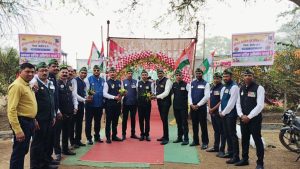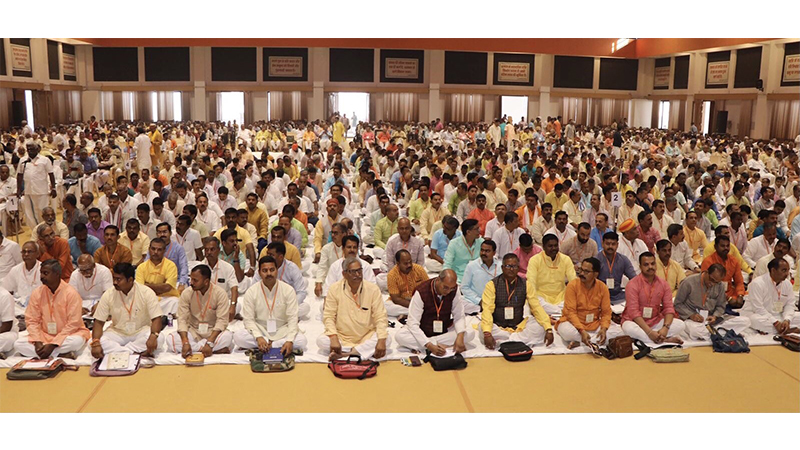Demystifying ‘progressive unfoldment’ of RSS’ vision and mission
Updated: February 12, 2024 15:30

As the Rashtriya Swayamsevak Sangh (RSS) turns 100 in 2025, it’s an enigma to many how an organisation which doesn’t have a formal membership expanded so much, and that too without succession wars.
The secret lies in the structure and functioning of the RSS. It doesn’t fit into the straight-jacketed organisational theories. It has a fluid-like nature with a value system at its core. Anyone who joins an RSS shakha (a daily/weekly gathering of the RSS volunteers for an hour) becomes a swayamsevak (volunteer).
The RSS does only one activity and that is organising shakhas and preparing volunteers with a strong character. (Currently, it organises more than 60,000 such shakhas across India). Some of these volunteers stay back in the organisation to run this basic function, while others move to various fields where they want to work. Over time they have set up organisations, institutions, and various platforms in their area of interest where many people join them through lateral entry. They need not necessarily be the RSS volunteers.
This is what all six sarsanghchalaks, since its inception, have termed as ‘progressive unfoldment’ of the RSS work. To understand this term further one needs to understand the multi-layered thought process of the RSS functionaries.
Progressive unfoldment
Contrary to common perception, the RSS doesn’t set any specific target in terms of the directions that it has to take. It believes in evolving along with the social structure as one of the core principles of the RSS is that it is not an organisation, but it is a band of volunteers who are organising the society for its transformation. When this goal is achieved, the RSS should vanish, and no one should give any credit to the RSS for this transformation as it is only a sub-function of the society that has transformed itself.
This ‘progressive unfoldment’ of the RSS through its alignment with society was visible in the Ram temple movement in the 1980s. Interestingly, the RSS had passed its resolution on Kashi Vishwanath temple in 1959, but in the 1980s it took up the cause of the Ram temple movement because that was the demand then. This neutralises the misconception that the RSS sets an agenda and mobilises society—it is usually the other way around. It is because of this vast network of volunteers that the RSS has got its ears to the ground. That is why the RSS is still going strong at 100 and despite being banned three times and hounded by its detractors since its inception, it continues to grow.
A significant part of the ‘progressive unfoldment’ of the RSS mission and vision is reflected in the wide variety of activities that its volunteers carry out in different fields ranging from education to consumer rights, and from tribal welfare to promotion of cinema.
Art and culture
Another misconception that needs to be challenged is the perception that the RSS believes in establishing the cultural hegemony of Hindus, and its worldview on art and culture revolves around ‘cultural nationalism’. Nothing could be far away from the truth.
RSS volunteers have set up two pan India organisations that work in the field of art and culture. One of them is Sanskar Bharati, and the other one is Bharatiya Chitra Sadhana. The former promotes and nurtures various Indian art forms in the field of music, dance, and fine arts, and the latter works on promoting good cinema.
Sanskar Bharati has units in every state, and thousands of artists are associated with it. Bharatiya Chitra Sadhana has been organising film festivals across different states at regular intervals where it showcases films, and organises discussions on various aspects of Indian cinema. India’s most prominent personalities in cinema and art are associated with these organisations.
Promotion of art is an inherent part of the RSS functioning. The shakhas have their own musical band called Ghosh, which plays in full strength. All major meetings of the RSS and most of its internal programmes start with a patriotic song, written and composed by volunteers.
Most importantly, all these organisations are not formally associated with the RSS. They define themselves as RSS-inspired organisations.
(The original article was first published in Deccan Herald. Link:https://www.deccanherald.com/india/getting-art-critics-who-like-rss-is-sanskar-bharti-s-next-task-2879464)












